The following is an excerpt from Reopening the World: How to Save Lives and Livelihoods, a new report where Brookings experts offer ideas to help policymakers protect lives and save livelihoods in the midst of the current COVID-19 pandemic.
 One of the more important changes in international affairs over the past decade has been the onset of a reality where the most important “rising” power, China, is increasingly vying for influence in what had long been a domain of American dominance: international institutions. That new reality been reflected into the COVID-19 crisis. The World Health Organization (WHO) has emerged as a Rorschach test of a changing international order.
One of the more important changes in international affairs over the past decade has been the onset of a reality where the most important “rising” power, China, is increasingly vying for influence in what had long been a domain of American dominance: international institutions. That new reality been reflected into the COVID-19 crisis. The World Health Organization (WHO) has emerged as a Rorschach test of a changing international order.
Since the onset of the pandemic, a lot of heat has been generated by critiques of the international health agency, and by the Trump administration’s effort to focus blame for the slow American response on excessive Chinese influence at the WHO. Some critiques, focused on early missteps by the international organization, were legitimate even if they often misunderstood where the balance of power lies in the relationship between major powers and international organizations, while others were simply political.
Across the board, the critiques reflected preexisting world views. For those who see in a globalized world a need for strong international cooperation, the obvious response to COVID-19 is to strengthen, not weaken, the WHO. For those who see China’s growing influence in international affairs as the central contemporary challenge, this episode has been proof of their pernicious influence. For those who focus on the role of democracy in international affairs, Taiwan’s limited-access status at the WHO is the focus of concern. And for those inclined to distrust globalization itself, the spread of COVID-19 is a cause célèbre for the case of reversing the globalization of supply chains.
A VITAL OPERATIONS ROLE
The WHO is playing a vital operational role in the response.
The WHO is playing a vital operational role in the response. Most countries rely on it for information and analysis about the disease itself—especially those countries (the large majority) that do not have their own equivalent to the U.S. Centers for Disease Control and Prevention (CDC). The WHO Secretariat is a repository of several of the world’s leading epidemiologists (many of them American or former CDC employees), and an information hub for the world’s leading epidemiology and infectious disease research centers. It has helped governments train rapid response teams to deal with contact tracing; helped governments retool their hospitals and emergency care centers to deal with the specific features of the COVID-19 outbreak; and supplied testing kits and equipment to more than 120 countries worldwide.
The WHO is also playing a key role in coordinating rapid-pace scientific work to generate progress toward treatment of the disease itself. Its most important effort in that domain is what’s referred to as the Solidarity Trial, in which scientific institutions from 100 countries have joined together in an effort to rapidly test four different sets of drugs for their potential to treat the disease. By pulling countries together, the joint trials enable larger sample sets, pooled data, and access to treatment courses from manufacturers in several different countries—in short, faster progress. And in March 2020, the WHO published the first roadmap for coordinated efforts to develop a vaccine—a key function that will allow for more efficient allocation of testing and trial efforts to fast-track vaccine development.
The WHO, though, is only one part of a wider set of national and multinational institutions involved in the response to the crisis. Several other actors have mobilized to respond. That includes the World Bank, which has mobilized more than US$14 billion for the response both to help countries navigate the economic consequences of the crisis, but also to help them finance surge capacity in their public health sectors. (The Bank’s targeting of loans and grants is largely driven by WHO assessments of countries’ public health capacity— another key role for that agency.)
As we shift from the immediate “lockdown” phase to efforts to develop treatment and vaccines, there are also important efforts underway from the wider set of international institutions involved in global epidemic health response. That includes GAVI, the Vaccine Alliance, whose original name—the Global Alliance for Vaccines and Immunization—did a better job of representing its mission; CEPI, the Coalition for Epidemic Prevention Innovation, which funds research into vaccines to deal with new viruses; and the Global Fund to Fight AIDS, Tuberculosis, and Malaria, which has important expertise in combating infectious diseases. Regional organizations like the African Union have stepped up their effort to backstop member states struggling with the response, and even the North Atlantic Treaty Organization stepped into the breach, airlifting emergency supplies of protective equipment to needful members.
PROBLEMS OF COORDINATION
When the world was confronting the widespread Ebola outbreak in West Africa and its incipient global spread, it became abundantly clear that the kind of wider, multi-dimensional response needed to deal with a phenomenon like the 2014 Ebola crisis was well beyond the remit and capability of the WHO. That’s for two reasons: the WHO is designed to be a scientific monitoring and advisory body, not an operational one; and even in its monitoring and advisory roles, its capacity had been weakened, not strengthened, during the previous decade. To deal with the Ebola outbreak, two unorthodox methods were used: the United Nations established a variant on a peacekeeping force to deploy into the affected countries (the UN Mission for Ebola Emergency Response, UNMEER); and the United States—with the backing of over 190 countries at the UN—sent just over 3,000 troops to West Africa to bolster the UN mission and the West African governments.
That combination of responses helped West Africa cope with Ebola and limit its global spread. But it’s not a model that offers a solution to COVID-19, because the UN can’t deploy that kind of response to more than 140 affected countries simultaneously, and even the United States doesn’t have the bandwidth to perform “national guard” functions at the scale the current crisis would warrant. A more diffuse, localized and country-specific set of responses is going to have to suffice.
That puts a premium on efforts to orchestrate the response, to make sure that it is efficiently targeted, streamlined, not duplicative, and anchored in sound policy and science. If this were any similar crisis during the past 50 years, we would expect one singular actor to be the most important voice playing that role: the U.S. Centers for Disease Control and Prevention. The combination of the CDC’s reputation for excellence, the scale of its resources, and the wider resources of the U.S. government that it could bring to bear have made it the world’s go-to source for advice and leadership in previous cases of 23 epidemic response. It is one of the most dispiriting parts of the American response to COVID-19 to see how weakened that institution has become, hobbled by politicization of science and decision-making at the White House, and by funding cuts. The combination of a weakened CDC and the White House’s universally panned decision to hold back funding for the WHO in the midst of this crisis have resulted in the United States forfeiting its capacity to lead the response to this crisis—at great cost.
WHO ELSE CAN LEAD?
If the United States steps back from a leadership role in the global public health architecture, can China step in? Briefly, it seemed like it would vie for that role, and it did record some early successes—in Italy, for example, early Chinese generosity showed in stark contrast to America’s effort to kick everyone else off the lifeboat, and public opinion polls in Italy show that that has had an effect on perceptions of the two competing powers; how enduring an effect, it remains to be seen. But China has squandered whatever opportunity it might have had by defaulting to pressure tactics to deter independent investigation into its early missteps or those of the WHO, and by launching a propaganda campaign to blame the United States for the pandemic. That the United States has also engaged in some loose blamesmanship has not diluted other countries’ distress at China’s pressure diplomacy (though it has reinforced countries bewilderment at America’s response).
To date, the closest thing we’ve seen to the kind of leadership this moment is crying out for is coming from Europe. The United Kingdom announced that it was co-hosting a Coronavirus Global Response Summit on May 4, bringing together key governments like Germany and Japan, key philanthropies like the Wellcome Trust and the Gates Foundation, and the critical institutions— especially the WHO and CEPI—to pump up international efforts to find a vaccine. That Summit was actually led by the president of the European Commission, Ursula von der Leyen, and raised €7.4 billion for the response effort. That the United States chose not to participate in that conference was widely noted.
The Europeans could take this further. In the absence of focused leadership from the White House, the best case for sustained, coordinated effort in the response is a tactical alliance from key European leaders like von der Leyen and the UK, and key Asian leaders like those of South Korea and Japan, working together to orchestrate the international response and drive the WHO and other international institutions in the right direction. They might even appoint a joint special envoy, or similar, who could play the kind of “singular voice” role that in the past we would have expected the CDC director or an American task force head to play.
THE NEED TO LEARN LESSONS
Over time, as the severity of this crisis recedes, it’s going to be important to learn lessons from what did and didn’t work in the international response. The Trump administration has called for an evaluation of the WHO’s early performance, and both it and other governments (like Australia) have called for an evaluation of China’s early missteps. Properly done, both could add value. But a real evaluation of the response requires a more comprehensive assessment to include more than the WHO. There is plenty of blame to go around, and there are more positives than the critics allow.
A serious evaluation should look backward, first, to understand the disagreements between governments over the WHO’s role in monitoring infectious disease outbreak over the preceding decade (and in particular the U.S.-China tussle over the 2005 revision to the International Health Regulations). It should examine the early actions of several key governments, including China and the United States. It should examine the wider panoply of international institutional responses. It should not be conducted by governments, but by independent institutions capable of driving hard-hitting conclusions and making cogent recommendations about how to strengthen the international architecture for response. There’s precedent in both the Brahimi Report on UN peacekeeping failures and the Joint Evaluation of the international response to the Rwanda genocide—both of which carefully weighed the balance of responsibility between institutions and the governments that seek to shape them. Above all it should reinforce an essential lesson: that investing in the international capacity for rapid response to a breaking crisis is a sustained, ongoing effort that requires vigilance and muscle.
That makes the Trump administration’s decision amidst this crisis to seek to hold back U.S. funding of the WHO all the more self-defeating. It’s been roundly rejected by America’s closest allies and served only to isolate the U.S. at a key moment for shaping the response to COVID-19 and the structure of global health cooperation as a whole. German Chancellor Angela Merkel spoke for most of the world when, on a G-7 call, she soundly rejected the U.S. approach: “she emphasized that the pandemic can only be defeated with a strong and coordinated international response,” and “expressed her full support for the WHO and numerous other partners,” her spokesperson said.
The United States has some uncomfortable choices ahead. It can have weak international institutions that don’t stand up to pressure from major governments; or it can have stronger institutions that can resist that kind of pressure. But like it or not, China is a major power now, and all but the strongest international institutions are going to be as reluctant to criticize China as they historically have been to criticize the United States. Most of the world understands that. For the U.S., it’s an uncomfortable new reality after several decades of being able to shape the action of international institutions without great power pushback. That world is gone.
We live now in a world where multilateral institutions are not simply instruments for cooperation; they are zones of struggle over ideas and policy between competing major powers. How the United States and China behave inside multilateral institutions takes on major import. In the near term, on the coronavirus, most countries will seek to find ways to work within the existing structure of the WHO and other parts of the global health architecture to find solutions, while the Trump administration is focused on cutting funding pending a putative review of WHO actions. If it sticks with its current course, the U.S. risks losing ground as China gains it, losing relative influence on international system working to address what happens after COVID-19.
The Brookings Institution is committed to quality, independence, and impact.
We are supported by a diverse array of funders. In line with our values and policies, each Brookings publication represents the sole views of its author(s).

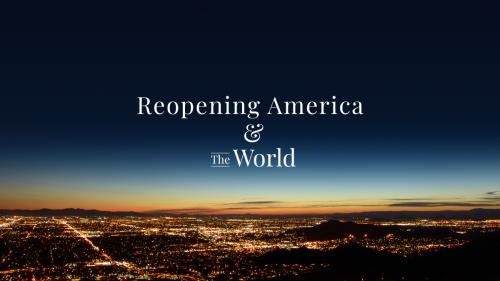
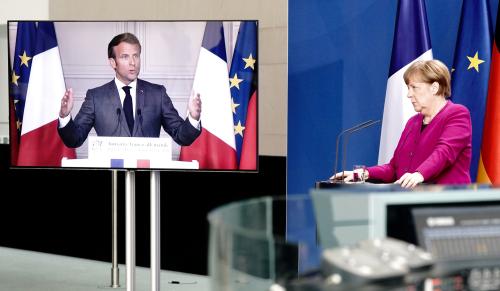
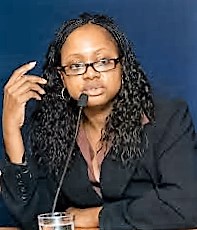
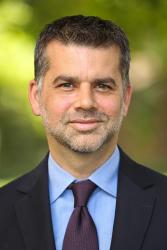

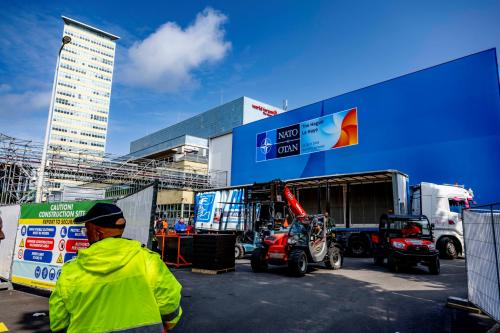
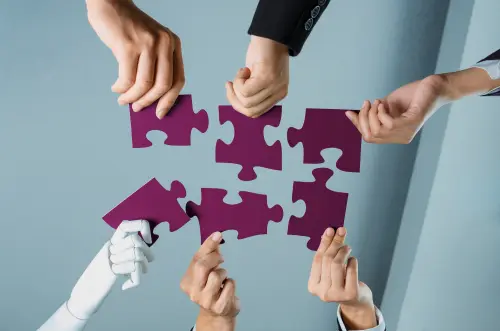
Commentary
Reopening the World: The WHO, international institutions, and the COVID-19 response
June 16, 2020